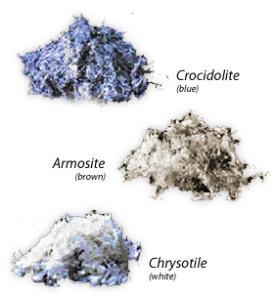Howdy everyone. Long time no posts huh? Well I have 2 for you now. Earlier this week I did a guest post on TNBC biology and clinical trials for the IBC Network, a local non-profit organization I volunteer with. Check it out here if you are interested! And now…
~ ~ ~ ~ ~
If I said mesothelioma, what would that bring to mind? If you’re lucky you might associate it with asbestos exposure from seeing lawyer commercials on TV aimed at mesothelioma patients who beat the odds.
A couple of weeks ago, I received an email from Cameron, a caregiver of a woman with mesothelioma, letting me know that today, September 26th is Mesothelioma Awareness Day. His request was for a post about mesothelioma, as his goal was to have 7200 voices talking about disease, to represent the 7200 hours that an average mesothelioma patient has to live. As all all-round cancer geek, how could I say no?
Top 10 facts about mesothelioma as per ME!!!
1) Unlike most cancers (that are more multi-factorial), mesothelioma is almost entirely preventable.

Figure 1: Different types of asbestos fibers – all carcinogenic
(Image from http://amlbenzene.net/diseases-asbestos.html)
That is because exposure to asbestos from either occupational sources or at home, is the strongest known risk factor that is avoidable. Indeed 70-80% of cases are linked to asbestos, but only <5% of exposed individuals develop mesothelioma. What does asbestos look like ? See figure 1 for different types. How are people exposed to it? The CDC has some useful information.
2) While the pathophysiology of asbestos as a carcinogen is not fully known due to the long latency between exposure and tumor formation, the overall hypothesis today is that asbestos fibers trigger a vicious cycle of chronic injury and inflammation, which promotes recruitment of macrophages and neutrophils, that generate ROS (reactive oxygen species) and RNS (reactive nitrogen species) inducing epithelial cell proliferation.
3) Mesotheliomas are epithelial tumors that derive from the mesothelium, or lining of various body cavities. 80% are from the pleural cavity though.
4) One genetic predisposition factor is inheritance of a germline mutation in BAP1 (BRCA1-associated protein), which is a histone modifying enzyme among other functions.
5) Nowadays mesothelioma can be diagnosed via serum-based assay called Mesomark which measures a soluble mesothelin-related peptide that is overexpressed in mesothelioma. More information on this can be found in a recent blog post by Dr Jack West, a thoracic oncologist from Seattle.
6) The average overall survival is only 10 months! Pretty dismal

7) Incidence is predicted to increase by 5-10% each year in most industrialized countries until about 2020. However it is interesting that although the rates in men have been steadily increasing, the incidence in females has remained steady. Did I mention Asbestos is still not banned!
8) Why is the prognosis so bad? Unfortunately, mesothelioma is usually fairly chemoresistant. In patients who are unresectable, however the only form of therapy which is even transiently effective is cytotoxic chemotherapy with Cisplatin and/or Pemetrexed. Even in early stage patients who get surgery first, it is rarely definitive and chemotherapy is used as a “mop-up” strategy. Someitmes, depending on site and degree of spread radiation may be used, although pleural disease is hard to irradiate without harming the lungs.
9) At a molecular level it is rather strange – most tumors have intact Rb and p53 pathways, two key tumor suppressor genes very commonly mutated in cancer. In addition, unlike tumors derived from surrounding visceral tissues (such as lung and pancreas) which often harbor Kras mutation, none of the Ras oncogenes are frequently mutated in mesothelioma. A comprehensive description of the genomics of mesothelioma has not been done.
10) There are no proven targeted therapies. Some areas under investigation include HDAC inhibitors, EGFR inhibitors, and just a few weeks ago, a trial of a FAK inhibitor, defactinib, which targets cancer stem cells was announced by Verastem.
~~~~~
Hope this was educational. If you would like to read more, I recommend visiting Cameron’s site .
If you are feeling charitable and want to donate towards research given the current terrible research funding scenario in the US (see figure 2 below), he recommends the Mesothelioma Applied Research Foundation who are also advocating today on Capital Hill for the cause.

Figure 2: Depressing graph showing a 5% decrease in Science R&D spending in the US, in contrast to China for example!
